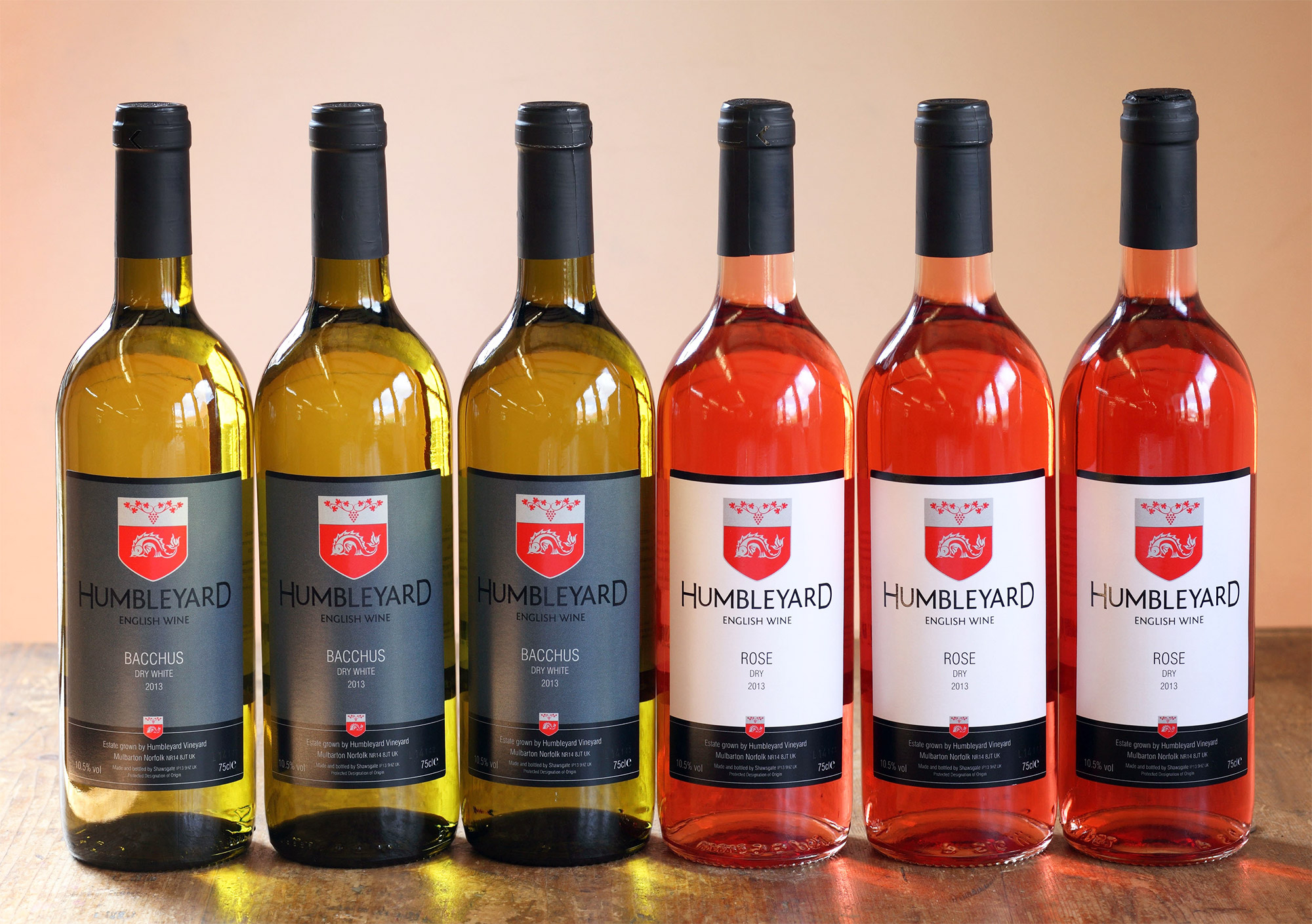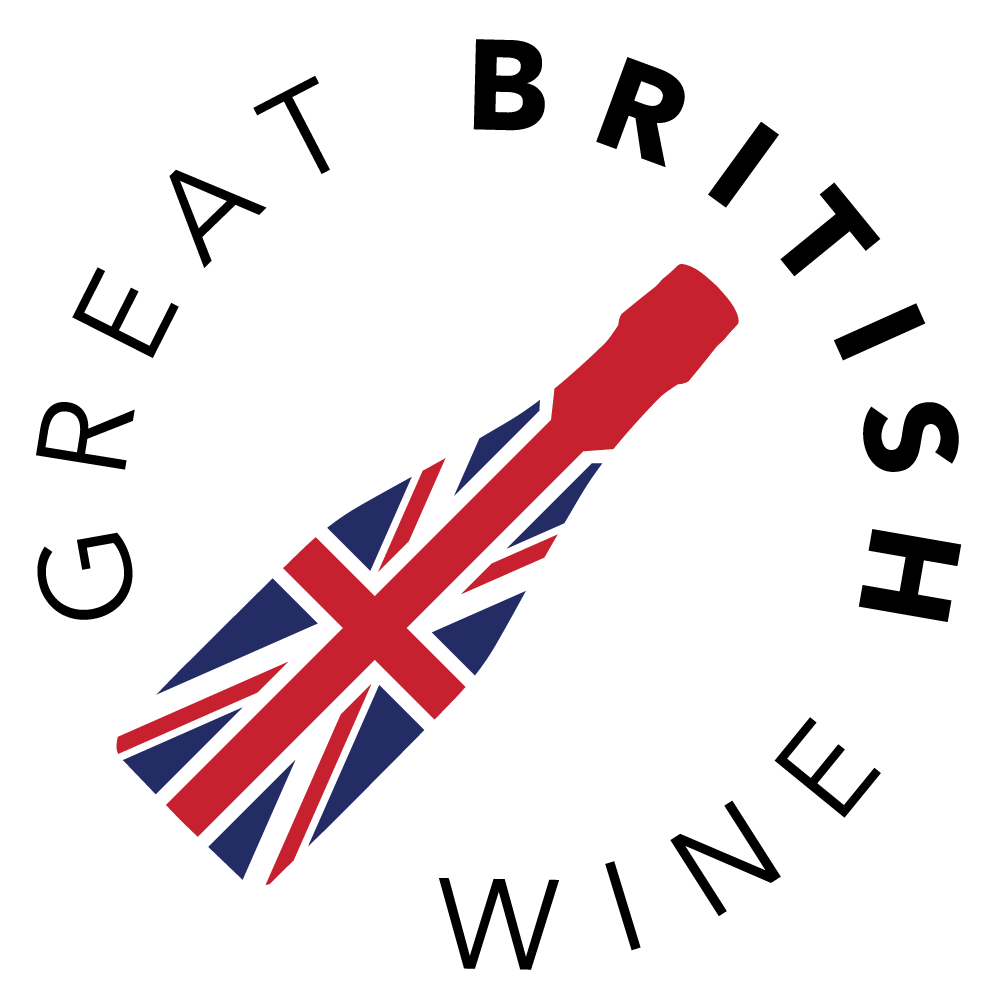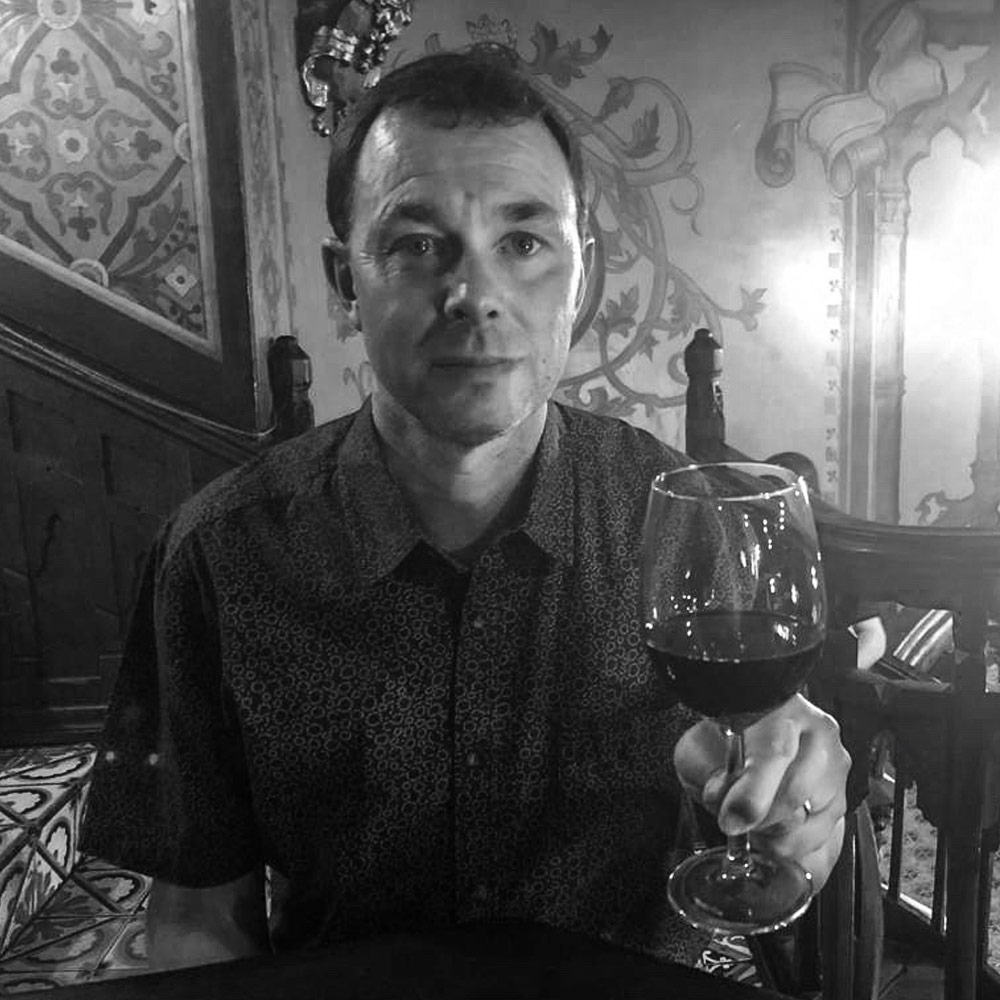
Robert Preston, owner of Humbleyard Vineyard in Norfolk, is an incorrigible optimist. And he has every right to be because his vines, situated in the village of Mulbarton (six miles south-west of Norwich), have been blessedly free from frost, hail, disease and damage from wasps and birds in the past few years. Robert’s sunny disposition is understandable when you taste his wines, all twelve of which have something to commend them. Formerly a strawberry and potato farmer, he grubbed up the strawberry plants for vines in 2010. Armed with the knowledge that the strawberries on the free-draining sandy loam soils of the Mulbarton site ripened a week or two earlier than other neighbouring locations, he felt confident that this augured well for future wine production. More vines followed in the next two years and he now has eight acres under vine.
Robert currently has his sparkling wines made by Dermot Sugrue at Wiston in West Sussex and his still wines by Shawsgate in Suffolk. He also provides grapes, amongst others, for Ben Witchell at nearby Flint Vineyard. He planted roughly equal amounts of nine different grape varieties, all of which ripen at different times, reducing the possibility of the whole crop being affected by a bout of bad weather. These comprise the three classic Champagne grape varieties (Chardonnay, Pinot Noir and Pinot Meunier), Sauvignon Blanc (used in both still and sparkling wines) and a group of Germanic cross varieties, namely Bacchus, Solaris, Reichensteiner, Rondo and Cabernet Cortis. He currently has no plans to expand the acreage, preferring instead to increase the amount of wine he sells from the cellar door. He sells his wines to various local restaurants and finds that they do very well at these locations. A useful sideline is the farm shop from where he sells fruit and vegetables and, obviously, the wine.
On my visit in late May, the vines looked in vigorous health with a few early signs of inflorescence in the Reichensteiner and Pinot Meunier in particular. Robert uses a double guyot system of training, leaving two of the previous year’s new growth shoots coming out of the crown and then training those shoots in opposite directions. Pruning takes place from late November to March and is done by his stepson Oliver, and another colleague employed by Robert.
We started off the tasting with the two sparkling wines. The White Cuvée is an intriguing blend of Chardonnay, Sauvignon Blanc and Reichensteiner. A pronounced floral nose led to a cocktail of flavours including kiwi fruit and sweet passion fruit with citrus, spicy and nutty notes adding balance. The Brut Rosé had slightly sweeter and fruitier flavours (summer pudding among them) complemented by butterscotch and toffee on the finish.
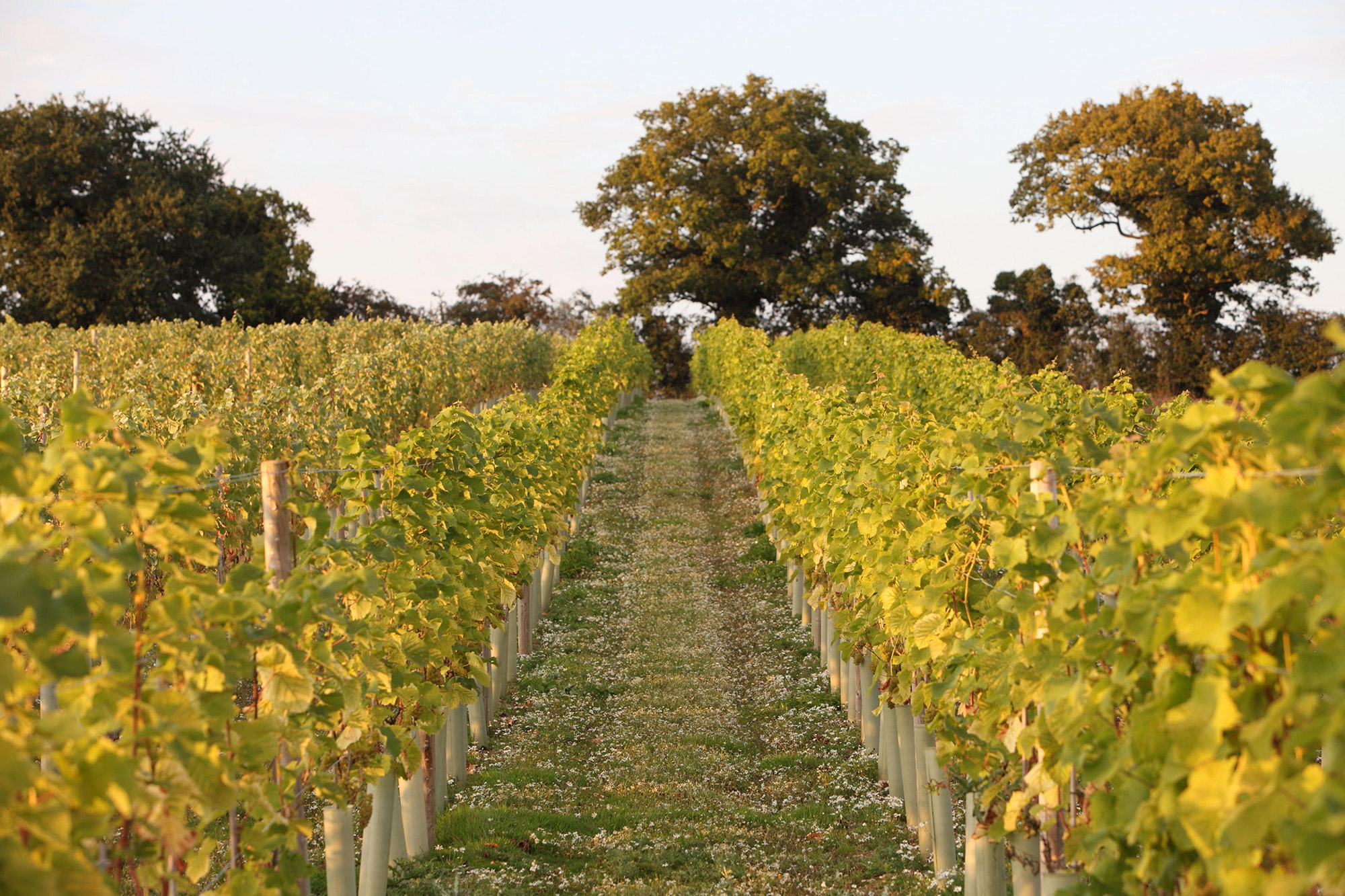
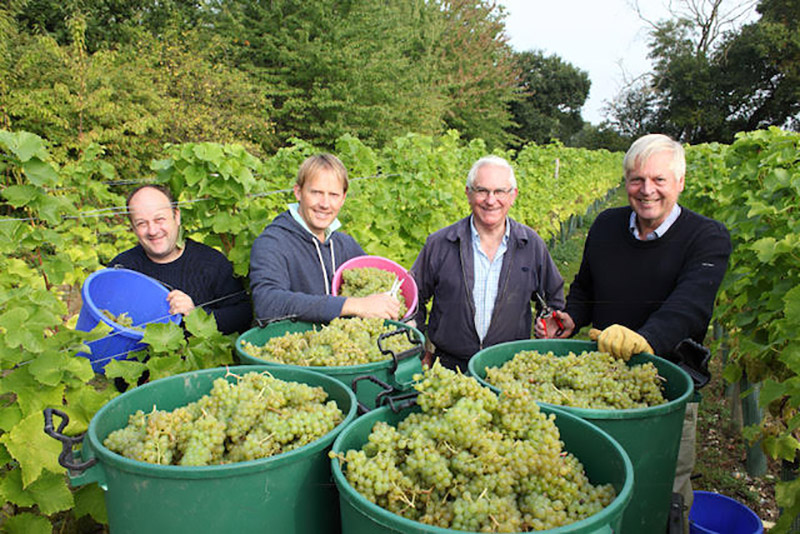
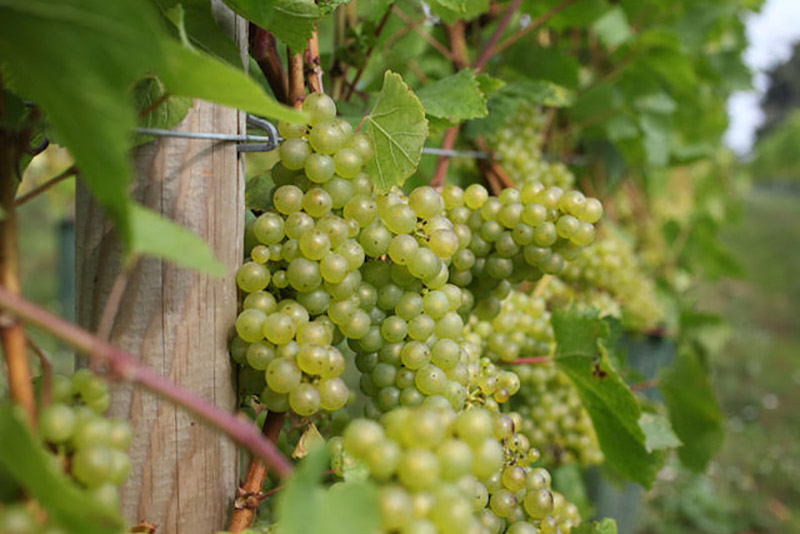
Photos with thanks to Humbleyard
We then moved on to a suite of still white wines starting with an excellent Bacchus. It was Humbleyard’s 2013 Bacchus which first alerted me to the potential of this vineyard. Whilst this 2016 version didn’t offer the powerful fruit of that wine, being slightly more dilute, the classic hallmarks of this now quintessentially English grape were present and correct. Aromas of tropical fruit, reminiscent of Flint’s Bacchus, were immediately apparent with classic gooseberry and greengage characteristics on the palate. Next were the two still Sauvignon Blancs which had something of the Loire about them with the earthy, mineral notes often present in wines of that region, on offer here too. Curiously I found the more recent wine, from 2015, more evolved than the 2014, this being particularly odd since 2014 had near perfect conditions to ripen this slow-growing grape. Of the next two still whites, I preferred the Cascade to the Solaris. The Cascade is made from 100% Reichensteiner and is named after a favourite boat of Robert’s. It is a crowd-pleasing wine, very easy to drink and goes down well at the public tastings that Robert holds. Described by Robert as being at the ‘medium end of dry’, I found it had an ideal balance of grapey fruit and acidity.
We then tried four different still rosés, starting with the 2013 Rosé made predominantly from Rondo with a little Reichensteiner. I remember visiting a wine merchant’s who sold this wine and they were determined to sell all of their allocation before introducing the 2014. They admitted that it was probably past it (this was a year ago). Well I can report that the 2013 is still in rude health, containing lovely rosewater, strawberry and raspberry notes. But the 2014 was something else! Full-bodied cherry and ripe cranberry fruit predominated and the wine drank almost like a light red wine. Gold Rosé came next, the first of two wines made from the curious hybrid grape, Cabernet Cortis (a cross between Cabernet Sauvignon and Solaris). It was the next wine which made more of an impression, however. This was the so-called Cortis Rosé, a dry and very refreshing drop which was very pale in colour due to the limited exposure of the juice to the skins.
We finished the still wines with the only oaked still wine in the Humbleyard portfolio, the Chardonnay XV 2015. Light in body and alcohol (9%), this wine was certainly not light on flavour. Distinctly and deliciously buttery, this also had delightful peach and pineapple fruit with a hint of butterscotch on the finish. Robert had a surprise up his sleeve for the finale. This was their High Spirit, triple distilled from rosé wine to 72% ABV and then diluted using the donor rosé which rounds it out at 30%. I tried this over ice first and then neat. It was much better unadulterated! Robert said that it goes down particularly well with the Women’s Institute when they visit for tastings.
I am very grateful to Robert for being so generous with his time and to his wife, Susan for the excellent lunch that she served to accompany the wines. We sat in their idyllic courtyard soaking up the glorious Bank Holiday Monday sunshine and, to paraphrase Robert Browning, God was certainly in his heaven. After visiting Humbleyard, I am certain that Robert made a brilliant decision to ditch the strawberries for the grapes and, do you know, I think he is too.
- 8 Acres
- Yes
